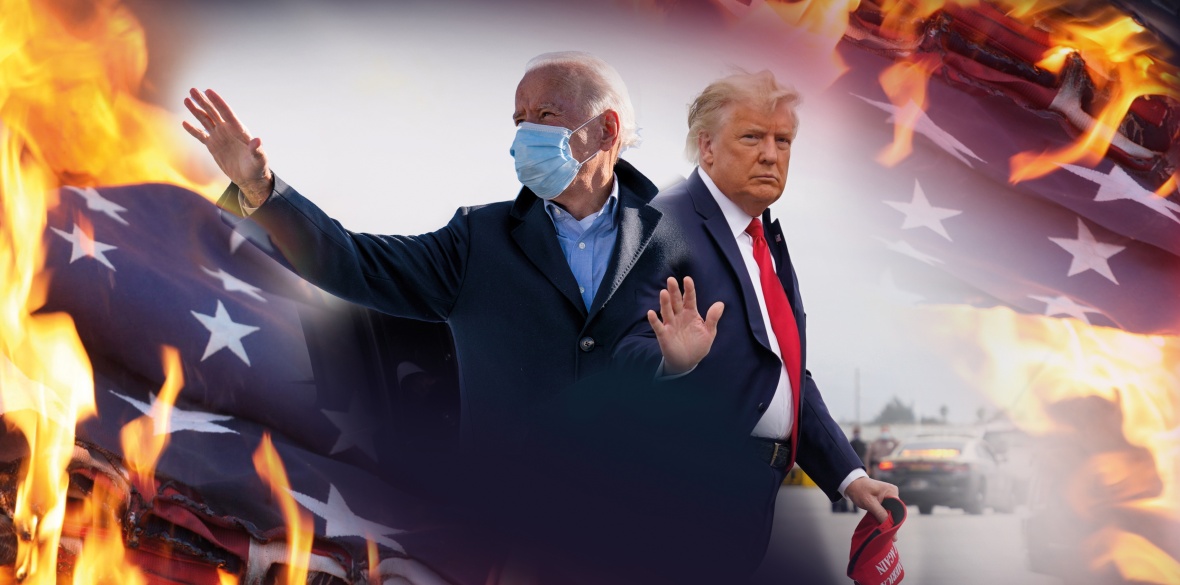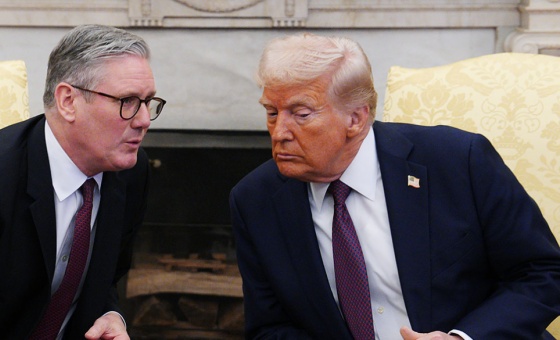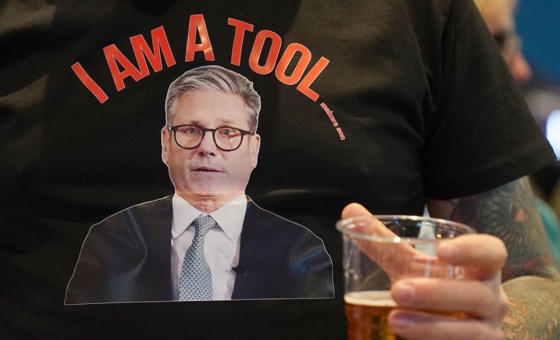This is the last article you can read this month
You can read more article this month
You can read more articles this month
Sorry your limit is up for this month
Reset on:
Please help support the Morning Star by subscribing here
IN THE run-up to the 2016 and 2020 US elections, socialist candidate Bernie Sanders did not win the Democratic Party’s presidential nomination, but his campaigns made significant changes in the political arena, especially among the youth.
Now, the decisive stage of this year’s election is at hand. According to most polls, if there are no unforeseen shocks or surprises, Joe Biden and the Democrats will win, even in the Senate.
In this most critical moment, when, according to many, fascism is becoming a genuine threat, a few points regarding the leftist movement in general and the Communist Party of the USA (CPUSA) specifically are worth paying attention to.
The following is an interview given by CJ Atkins to Iranian newspaper Nameh Mardom.
Nameh Mardom: Who is supporting Trump? What sections of the American people voted for him in 2016 and will they this time?
CJ Atkins: The answer to this question has many aspects. It is undeniable that Trump has a mass movement supporting him. It is strongest in Southern states and parts of the Midwest. He captures support with racism, misogyny, Islamophobia and anti-immigrant sentiment.
The good news, if there is any, is that his supporters account for only about one-third of the electorate. This is the mass base for fascism in the US — the voters who will stand by Trump no matter how outrageous his rhetoric and actions become. Even 220,000 coronavirus deaths do not faze them.
In 2016, Trump combined his base with many white working-class voters in industrial states who usually vote Democrat. Decades of “globalisation” and “free trade” left people open to manipulative claims that Trump would “bring back jobs.” It didn’t happen, though, and now many of these voters are abandoning Trump. His failure to manage Covid-19 may peel away even more.

NM: Does Trump still have the same level of support within the US Establishment as in 2016?
CJA: Among the political and economic Establishment, the reasons for backing Trump are more varied. For many Republicans, Trump was simply a means to an end. They may not agree with his style or conspiracy theories, but he delivered the tax cuts, deregulation, military spending and conservative court judges they wanted.
As for the capitalist class, it was largely split in 2016. Trump’s recklessness and divisive politics were seen as a threat to the international neoliberal order. That is why Trump’s earliest business supporters were mostly representatives of small and medium domestic capital.
Sectors like energy, finance and high-tech would have preferred an Establishment Republican candidate like a Bush or even a Democrat like Clinton. Their business is international, so many were unwilling to risk supporting someone who threatened to close borders and restrict free trade. For them, the main criterion was competent management of the capitalist system.
After Clinton’s loss, the whole capitalist class of course gladly welcomed the tax cuts and deregulation presented by a Trump presidency. Some sectors, like the military-industrial complex, saw their profits explode under Trump.
Before Covid-19, most major capitalists would have wanted a second Trump term. But with the coronavirus disaster and the economic depression, many on Wall Street and in Silicon Valley are warming to a Biden administration. They are not excited about Biden’s possible tax increases, but Republicans’ opposition to more economic stimulus turns off many.
But clearly there are still major capitalist forces backing Trump. Billionaire hedge-fund managers and real-estate moguls are among his biggest donors and Fox News loyally broadcasts his rallies on television. But as Trump struggles to raise money in the closing days of the election, it looks like these may be exceptions.
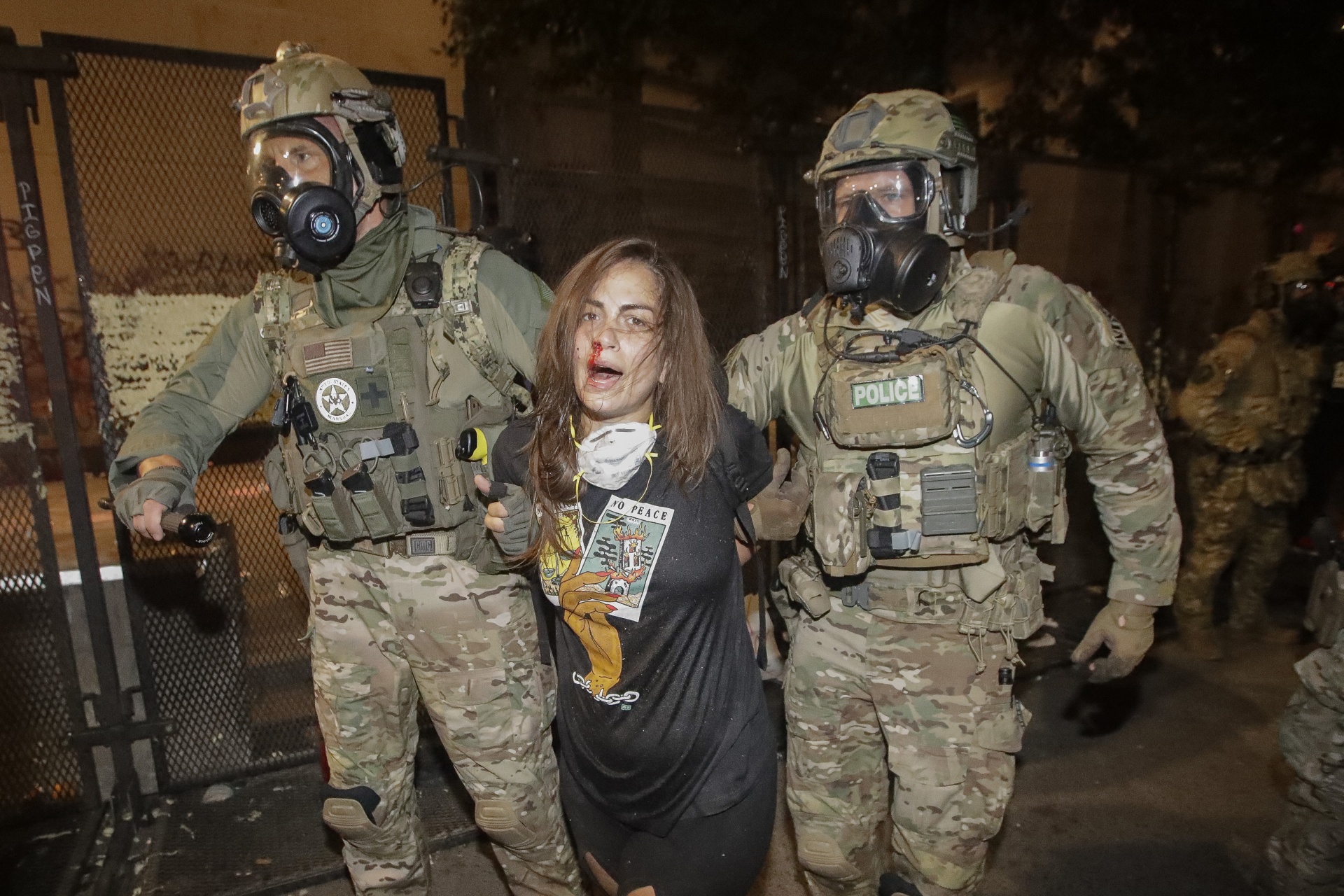
NM: What are the strengths and weaknesses of the anti-Trump coalition?
CJA: It is the broadest electoral grouping seen in decades. In essence, it is an “all-people’s front” that includes organised labour, Black Lives Matter and Native American organisations, Latinos and immigrant groups, women’s and LGBTQ groups, Asian and Jewish organisations, young people, Muslims and more. Within its ranks are leftists, liberals, centrists, some conservatives and sections of business.
Given such a diversity of class and social interests, there are inherent tensions. This was on display when the Biden-Harris platform was drafted. The left pushed for Medicare for All [universal health coverage] while private insurance lobbyists resisted.
The result was a compromise “public option” that left private insurance untouched. This is just one example. If the Democrats win, these tensions will likely escalate.
After the election, the left and progressive movements may find themselves in conflict with other elements of what had been the anti-Trump coalition. But with the extreme right in Congress seeking to sabotage and block progress, there will still be a need for unity on many points.
NM: Mobilising labour and working people has been and will be the main task of any left movement and party. What has been the CPUSA’s approach in this regard?
CJA: The CPUSA is an integral part of the anti-Trump coalition and works to inject advanced concepts into the struggle. This includes the CPUSA’s Vote Against Fascism campaign, which seeks to alert the working class to the danger Trump represents. Public forums, street protests, voter pledges and daily coverage in People’s World newspaper — these are all parts of the communist effort.
The CPUSA proceeds from the “popular front” strategy first elaborated by Dimitrov in 1935. US society is complex, with many different class and social forces in struggle, but right now the main question is “which side are you on?”
In the current moment, there are two opposite political tendencies in the US. Lined up on one side with Trump are the most backward, reactionary and fascist elements. On the other side are all those who want to preserve bourgeois democracy — however imperfect it is.
Communist strategy and tactics will adapt depending on the outcome of the election. Much of the mobilisation that has happened has been initiated by the mass movements themselves, not by the Democratic Party. That is a form of political independence which the CPUSA will try to expand and carry over into the struggle over the Biden administration’s agenda.
No matter the outcome on November 3, CPUSA will continue building unity and avoiding sectarianism or isolation. US communists will never cut themselves off from the broad forces working to beat the extreme right and eventually win socialism. Wherever the masses are is where the CPUSA will be found.
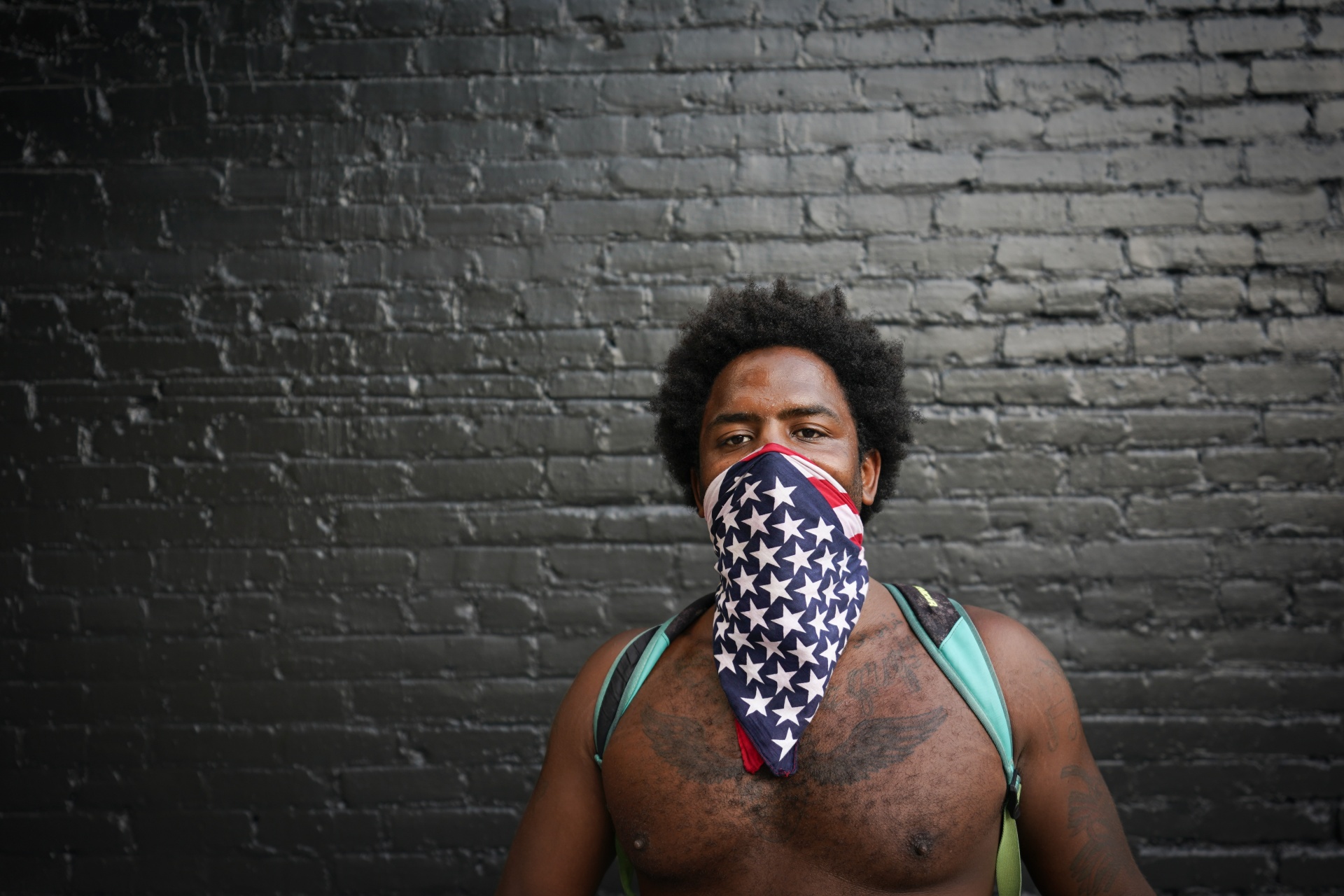
NM: Given the economic crisis, would Biden go back to neoliberal politics, subservient to finance capital and tech companies? Or would Biden be willing to embark on a different agenda?
CJA: This isn’t the 1990s or the 2000s; a lot has changed. The US is facing a deadly pandemic and an economic crisis unmatched since the Great Depression. Furthermore, the left and people’s movements are more active and mobilised than they have been in years. Add all this together and it means Biden and the Democrats cannot just pick up the same neoliberal policy book.
Of course, the Democratic Party is an arena of struggle. Big sections of finance capital and high-tech capital compete for influence within the party against labour and progressive movements. Capital will try to pull a Biden administration in its direction, against the needs of the people. That’s why struggle continues even if the Democrats win.
NM: Even if Trump loses, will “Trumpism” continue?
CJA: A landslide defeat of Trump would land a major blow against Trumpism, but the right will regroup. Trump has emboldened the most vile, racist and reactionary elements — they will not suddenly disappear. Even if Trump as an individual exits the stage, there are Republicans who will step into his shoes.
But Trump-like Republicans will have to fight with moderates trying to pull their party back from the fascist brink. There will be extended factional struggle, but unfortunately there will still be Trumpism with or without Trump.
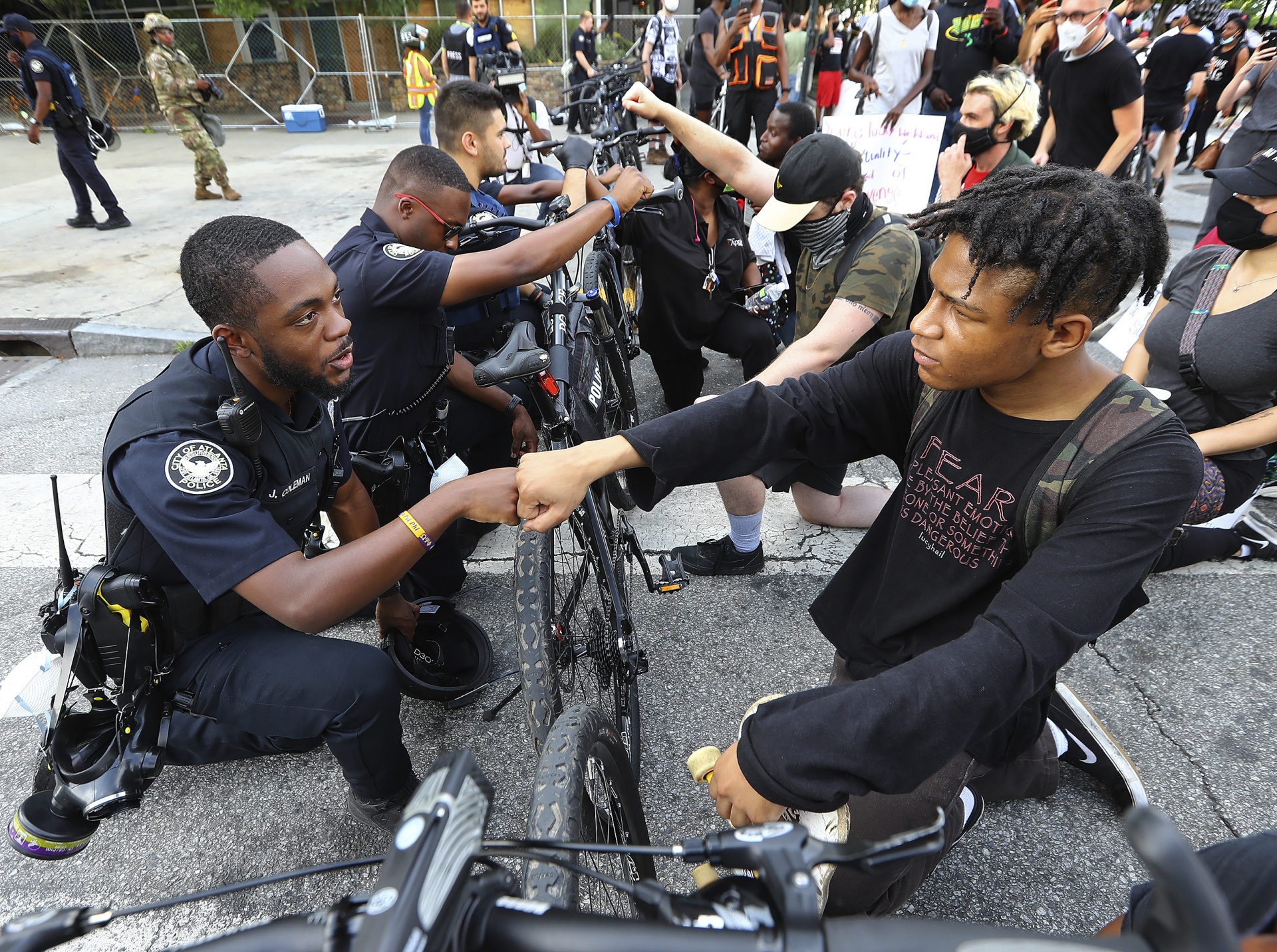
NM: How would US policy towards Iran and China be affected if Biden wins?
CJA: The two US parties have long had similar positions when it comes to foreign policy and this may be the area where it seems there is the narrowest of difference between Trump and Biden. The unequivocal backing for Israel is shared by Republicans and Democrats, for example. But even in the Middle East, the dynamics of struggle will vary depending on who wins.
Biden will surely maintain an aggressive stance against Iran. Rather than pursuing a unilateral policy of threats and damaging sanctions like Trump, however, Biden will likely revive the 2015 JCPOA [Iran nuclear deal] process. But the sanctions against Iran will not be lifted immediately when Biden takes office. How quickly US policy shifts will also depend on the dynamics of the 2021 Iranian election.
Policy toward China is another area where there will be considerable continuity from Trump to Biden. US imperialism views China as its chief competitor, economically and technologically. The move to “contain” China already started under Obama.
Trump accelerated it and went in a more aggressive direction with his trade war and technology blockades. Biden will continue treating China as an adversary and US policy is pushing toward a “new cold war.” But it will be a cold war that only Washington wants; China has no interest in repeating the US-Soviet confrontation.
NM: Black Lives Matter is gaining influence and some of its leaders do not deny their leftist viewpoints related to the economic inequality intrinsic to capitalism. How do you view BLM and its agenda?
CJA: BLM emerged from the fight against police violence and systemic racism in recent years, but it is a product of the 400-year struggle for black liberation in North America. The police murder of George Floyd this summer ignited a national anti-racist uprising in cities across the country that is now propelling African-Americans to vote in massive numbers.
Many BLM leaders and activists make the connections between capitalism and inequality and they know that truly ending racism will require a total overhaul of capitalism. At least one BLM leader is expected to win a seat in Congress.
This is a movement that goes beyond the fight against Trumpism and it has already had an historic impact on US society.
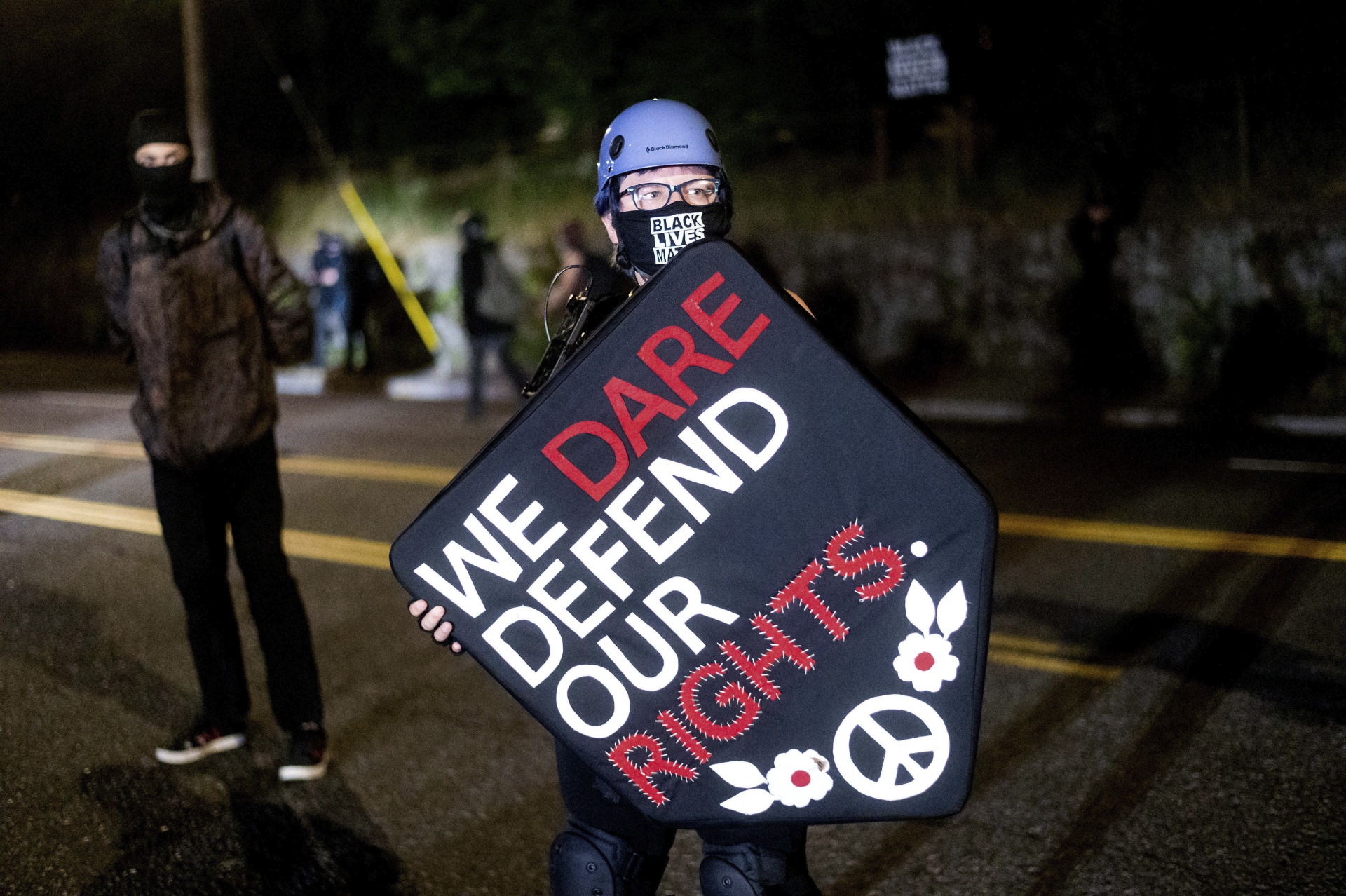
NM: How do you evaluate the role of Sanders’s “movement” in promoting a leftist agenda?
CJA: Sanders’s campaigns helped spark what CPUSA calls a “socialist moment” in the US. Millions of young people and workers have become politicised and are now open to the idea of socialism — even if they are unclear on what socialism means. Reforms like healthcare for all, taxing the rich, free education, union rights and stopping climate change are all more popular thanks to Sanders.
His impact is also illustrated by the rapid growth that left organisations have seen recently. Democratic Socialists of America — the largest group of US social democrats — saw an explosion in membership after 2016. And the CPUSA has also recruited thousands of members in the last few years.
More people than ever are questioning the capitalist status quo and learning that if they unite, they can win change.
